An Introduction: The Science of Color Vision
Color plays a big role in our daily lives. The way we view colors, from the blue sky to the green trees, changes how we feel about the world around us. But outside landscapes, one of the most interesting things about how human sees color is their eye.
Anyone with hazel eyes, gray eyes, blue eyes, brown eyes, or different shades of green eyes has an iris, and that tells a story about their genes, light, and biology.
Have you ever thought about how we see color and why people have such distinct eye colors? Learning about how color vision works and how eye color is inherited helps us comprehend how complicated our eyes are and how beautiful it is that people are different.
The Importance of Color in Daily Life
Colors affect our emotions, actions, and even our health. Warm colors like red and yellow can energize us, while cool colors like blue and green can calm us. People may see the small distinctions between shades of hazel, different types of blue, or variants of brown eyes, much like we can see the differences between a blue sky and a stormy gray one.
Color psychology is used by marketers to make brands and by artists to show how they feel. And for a lot of people, the color of their eyes, like hazel green eyes, light grey eyes, or brown hazel eyes, has cultural and symbolic implications.
How the Human Eye Sees Color?
A Brief Overview of the Human Eye Structure
The human eye is an incredible example of biological engineering. On the surface, we have the cornea and lens, which focus light. Inside, the retina contains photoreceptor cells that detect light and color. Finally, the optic nerve carries these signals to the brain, which interprets them.
Interestingly, cones enable us to perceive red, green, and blue light. The way light scatters in the iris explains why some people have bluish green eyes, gray green eyes, or golden flecks in their hazel eyes.
Historical Perspectives on Color Perception
Scientists have been interested in how the human eye sees color for hundreds of years, from Aristotle’s early thoughts about mixing light and darkness to Isaac Newton’s work on separating white light into a spectrum.
Currently, the study of eye color is approached with great depth, as factors such as the genetics of hazel eyes and the rarity of natural yellow eye color.
An overview of Rods, Cones, and Color Perception
Rods and cones are the two types of photoreceptor cells in the human retina. They change light into electrical signals that the brain interprets as vision. They have different jobs, are sensitive to light in various ways, and help determine how the human eye sees color in different ways.
- Rods: Each eye has approximately 120 million rods, which are highly sensitive to light and suitable for night vision, but they cannot sense colors.
- Cones: Each eye has approximately 6 million cones that work best in strong light and allow us to see colors.
Cones are divided into three types based on the color they detect:
- Red Cones (L-cones): Sensitive to long wavelengths.
- Green Cones (M-cones): Sensitive to medium wavelengths.
- Blue Cones (S-cones): Sensitive to short wavelengths.
The types of cones explain why varying wavelengths appear as different eye colors on the natural eye color chart. For example, ice blue eyes reflect short wavelengths, whereas brown or reddish brown eyes absorb more light.
Photoreceptors, Wavelengths, and the Basis of Human Vision
The fovea, a little pit in the retina, is full with cones, which provide us the best color discrimination and the clearest eyesight. Rods are more spread out, especially near the borders of the retina. This helps humans see in dim light and perceive things moving.
The Process of Color Perception
Light Wavelength and Color Detection:
Colors represent different wavelengths of light. Red has the longest wavelength, and blue/violet has the shortest. When light reaches the eye, its wavelength determines which cones are activated.
The Journey of Light Through the Eye:
Light first passes through the cornea and lens, which focus it onto the retina. The photoreceptor cells in the retina then detect this light and send messages to the brain via the optic nerve.
Signal Transmission to the Brain:
When the signals reach the brain, they are processed in the visual cortex, allowing us to perceive different colors.
This mechanism also changes how small changes in eye color look. such as brown in blue eyes, hazel blue color, or why some people wonder, “why are my eyes grey today?”
Eye Color Genetics and Variations
Human Eye colors are determined by melanin levels and genetic patterns. Contrary to the common myth, not “everyone is born with blue eyes.” In fact, many babies are born with light shades that later darken to brown or hazel, depending on melanin development. The way the human eye sees color is not the same as how eye color is determined, which has to do with light scattering and pigment.
Types of Eye Colors
Brown Eyes:
The most common worldwide. Variations include light brown hazel eyes, dark brown, amber eyes vs brown eyes, and even reddish brown eyes.
Blue Eyes:
Can be pale, bright, or deep. Sub-types include bluish gray eyes, deep blue eye color, and different kinds of blue eyes like turquoise (blue + green).
Hazel Eyes:
Multi-tonal, often a mix of brown, green, or gold. Some appear more as brownish hazel eyes, others as bluish hazel eyes or hazel green eyes.
Green Eyes:
Among the rarest. Options vary from light green eyes to dark green eyes, sometimes combined with gold flecks or appearing greenish grayish.
Grey Eyes:
Rare and captivating. Variations include dark grey eye color, light grey eyes, gray blue eyes, and gray green eyes.
Even within a family, genes can produce diverse shades, explaining why siblings may have completely different eye color for brown eyes or natural green eye color results.
Unique and Rare Eye Colors
Amber Eyes: Yellowish-gold, distinct from brown.
Natural Gold Eyes: Extremely rare, creating a golden appearance.
Natural Red Eyes: Mostly linked to albinism, making them look red or pinkish.
Black Eyes: True black does not exist, but very dark brown can appear black.
Blue and Yellow Eyes (Heterochromia): Having two different colored eyes.
One common question is, “can you have black eyes?” Technically no, but very dark brown may look that way.
Grey Eyes vs Blue Eyes
Many people wonder, “what does grey eyes look like compared to blue?” Grey eyes often blend with surrounding light, causing shifts toward bluish gray eyes or gray green eyes. Blue eyes reflect more specific shorter wavelengths, giving them a clearer hue.
Types & Shapes of Eyes: What Makes Each Unique
Eye shape and appearance differ globally:
Cat eyes: Almond-shaped, often associated with feline beauty.
Round eyes: Big and circular, expressive.
Monolid, double eyelid, deep-set, hooded: Genetic traits affecting perceived size and attractiveness.
“Most beautiful eyes in the world” often combine unique color (like emerald, amber, or rare grey eyes) with a striking shape or pattern, such as heterochromia.
Celebrities and Eye Colors
Kareena Kapoor eye color: Hazel-green
Kajol and Rani Mukherjee eye colour: Hazel-brown/green
Hollywood actresses/actors with blue eyes: Notable for piercing blue, blue-green, or blue-grey eye colors
Indians with blue eyes: Unique genetic traits found in some Indian populations.
Most Beautiful Eye Colors and Shapes
Studies and polls report hazel, green, and grey eyes (like Kajol’s) as among the most attractive, especially when paired with unique traits such as amber eyes or heterochromia eyes.
Which eye color is most attractive / best?
There’s no universal answer, but rare eye colors and striking patterns often rank highest.
A complete guide on eye infections and vision problems
This guide covers color blindness, a photoreceptor-related visual condition, and various red eye problems, from the common conjunctivitis to more serious eye infections.
What is Color Blindness and Its Types?
Color blindness happens when one or more types of cones in the eye don’t work properly or are missing. Common types include:
- Red-green color blindness: Difficulty distinguishing between red and green.
- Blue-yellow color blindness: Difficulty distinguishing between blue and yellow.
- Complete color blindness: A rare condition where a person cannot see any colors at all.
Conjunctivitis (Eye Infections): Symptoms, Causes & Treatments
A common, contagious eye infection affecting all ages. Signs and symptoms of conjunctivitis include:
- Red eye or pink appearance
- Eye irritation and itchy, watery eyes
- Swollen eyelids
- Discharge (yellow, green, or clear)
- Sensitivity to light
Causes:
- Viral (most common), bacterial, allergic, or chemical.
- Madras eye symptoms and “eye diseases conjunctivitis” are Indian-specific search volumes.
Red Eye and Its Causes: From Pink Eye to Allergies
Red eye or bloodshot eyes can result from:
- Infection (eye conjunctivitis/pink eye, viral or bacterial)
- Allergies (eye irritation, sore eyes, burning, watery eyes)
- Fatigue or injury (redness in one eye without pain)
- Contact lens use
- Medical conditions (high blood pressure, jaundice eyes, etc.)
Common queries like “why eyes become red,” “reasons for red eyes,” and “best red eye drops” highlight the demand for home remedies and treatments.
Other Eye Infection Types
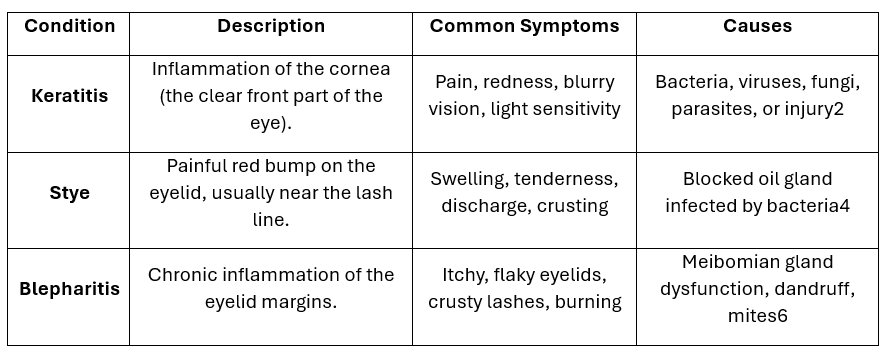
Eye Treatments & Remedies:
If you have any of the following symptoms, the best thing to do is to see a qualified ophthalmologist (eye doctor) or optometrist very soon:
- A lot of pain in the eyes.
- Sudden or getting worse blurry vision.
- Very sensitive to light (photophobia).
- A thick, yellow, or green discharge.
- A feeling of something foreign that won’t go away.
- Redness that doesn’t get better after 24 to 48 hours.
- Jaundice is when the skin or eyes turn yellow.
Things to Do Until You See a Doctor:
- Don’t rub your eyes: This can transmit germs and make things worse or hurt them more.
- Keep your hands clean by washing them often: Don’t share your makeup, towels, or pillowcases.
- Take Out Your Contacts: If you use contacts and your eyes are red or irritated, take them out right away and don’t put them back in until your symptoms are gone and a doctor says it’s okay.
- Use warm compresses: A clean towel soaked in warm water and put on the closed eyelid can help with irritation or crusting.
- Use artificial tears: Over-the-counter eye drops that lubricate the eyes can assist with irritation, but stay away from solutions that say they will “get the red out,” as they can sometimes make things worse over time.
For viral conjunctivitis, antibiotics are ineffective. Bacterial may need prescription drops. Allergic conjunctivitis benefits from avoiding allergens and using antihistamines. If yellow eyes appear, check for jaundice and consult a doctor, as this isn’t related to how the human eye sees color but to a medical condition.
Eye Care: Remedies, and Health Tips
How to reduce eye redness: Cooling compress, avoid allergens, use lubricating drops.
Best eye drops for red eyes: Preservative-free artificial tears, avoid overusing vasoconstrictors
Home remedies for red/sore eyes: Cold spoons, tea bags, good sleep, avoid screen strain.
Eye color care: Protect eyes from UV light, reduce eye irritation
Nutrition: Foods rich in antioxidants may support eye health (but don’t change color)
Also read – How Propane Refrigerator Works?
Conclusion and Summary
This study has gone into great length about the interesting and complicated way that the human eye sees color, turning light waves into the bright world we see and a brief overview on eye infections and vision problems.
Whether you have hazel green eyes, dark brown eyes, amber eye color, grey eyes, or blue eyes, every eye is unique and beautiful.
Understanding eye anatomy, color genetics, and medical care can keep your vision clear and your eyes healthy. For personalized advice or eye infections, consult an ophthalmologist.
Also read – How Does a Microwave Work to Heat Food?
Frequently Asked Questions (FAQs)
This FAQ section is designed to provide quick and clear answers to the most common inquiries we receive. We encourage you to click on a question to find the information you need. If you can’t find an answer here, please don’t hesitate to visit our Contact Us page for further assistance.
What Causes Color Blindness?
Color blindness is often caused by genetic factors affecting the cones in the retina. Other causes can include eye injuries or diseases.
How Do We Test Color Vision?
Color vision can be tested using Ishihara plates, which are images composed of various colored dots. People with normal vision see one digit, while those with color blindness see another.
Can Color Vision Be Corrected or Enhanced?
Currently, there is no cure for color blindness, but special lenses and apps can help enhance color perception for those affected. Research is ongoing to develop more permanent solutions.
What 3-colors can the human eye detect?
Red, Green, Blue.
The human eye is equipped with three types of cones, enabling us to perceive a specific range of light and thus, the colors on the electromagnetic spectrum, known as the visible light spectrum. These colors are blue, green, and red. However, our visual perception extends beyond these primary colors to encompass a diverse array of hues and tones.
What color can humans not see?
Red-green and yellow-blue
Red-green and yellow-blue are labeled as “forbidden colors.” They consist of pairs of hues with light frequencies that naturally cancel each other out in the human eye, making it challenging to perceive them simultaneously.
How common are hazel eyes?
Hazel eyes occur in about 5% of the population worldwide.
Are grey eyes rare?
Yes, true grey eyes are very rare, making up about 1% of the population.
Can people have grey eyes naturally?
Yes, though they are rare compared to blue or brown eyes.
What causes bloodshot eyes / red eyes?
Infections, allergies, fatigue, dryness, or injury
What does heterochromia mean?
Having two different colored eyes or two colors in one eye
What causes yellow eyes?
Jaundice, liver disease, or medications
Can my eye color change with age?
Sometimes, due to melanin shifts or health issues
Having any queries? – Do reach us at info@scivoyage.com

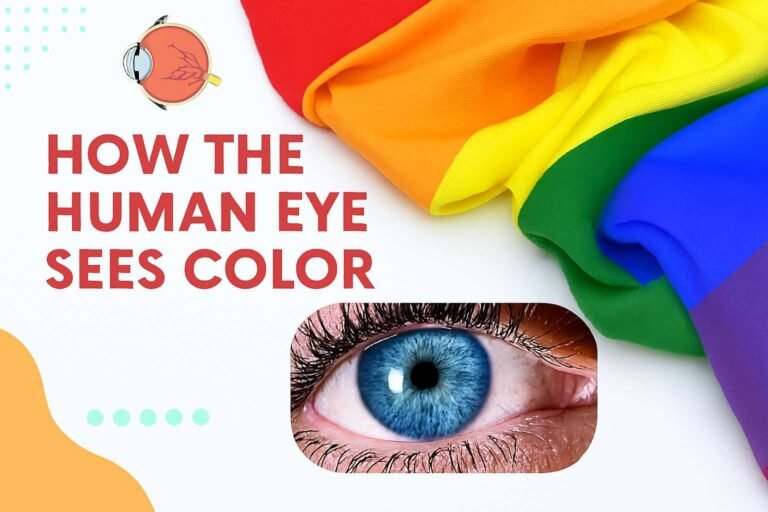
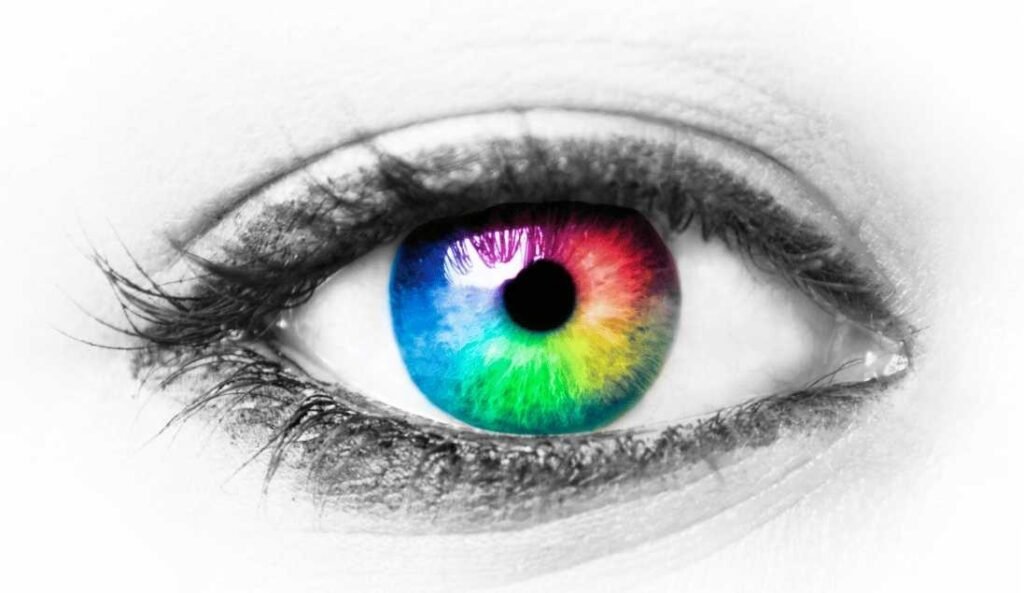
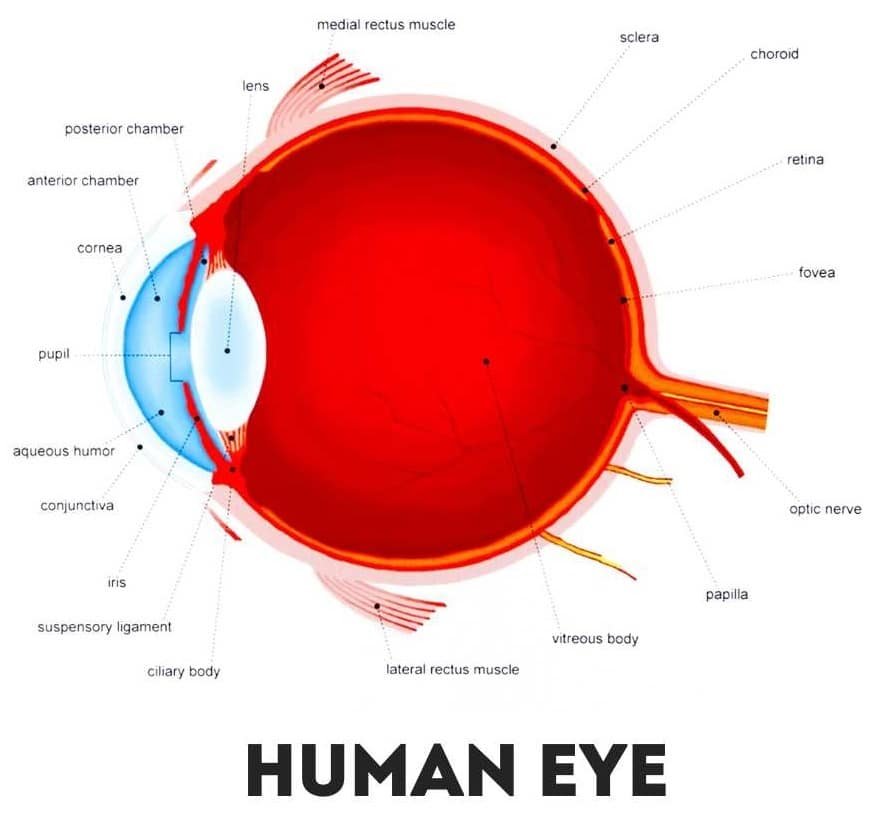
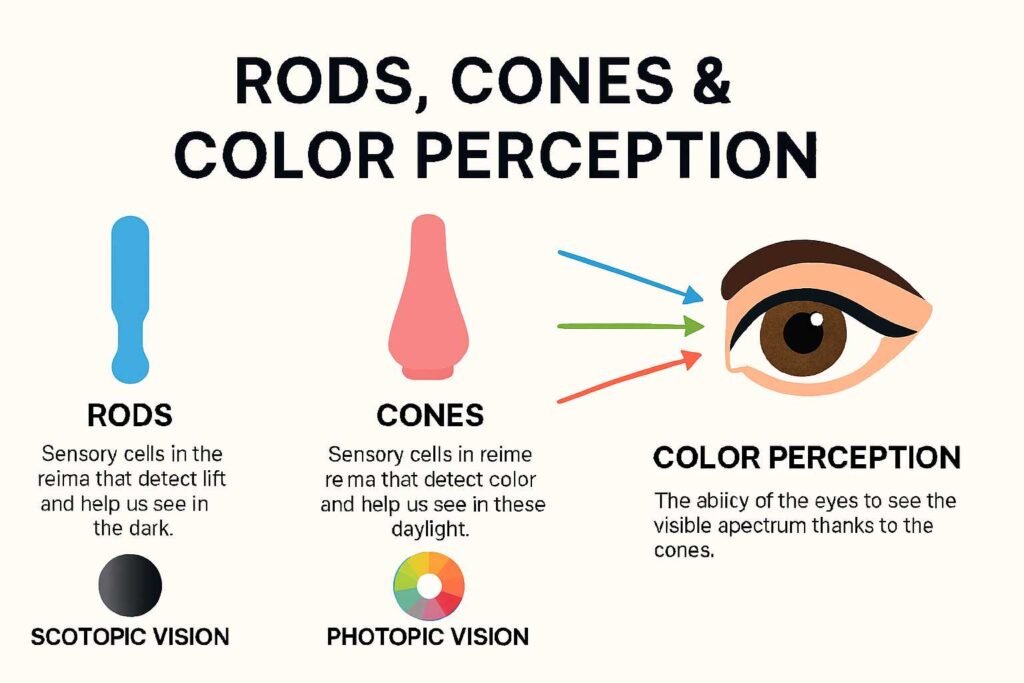
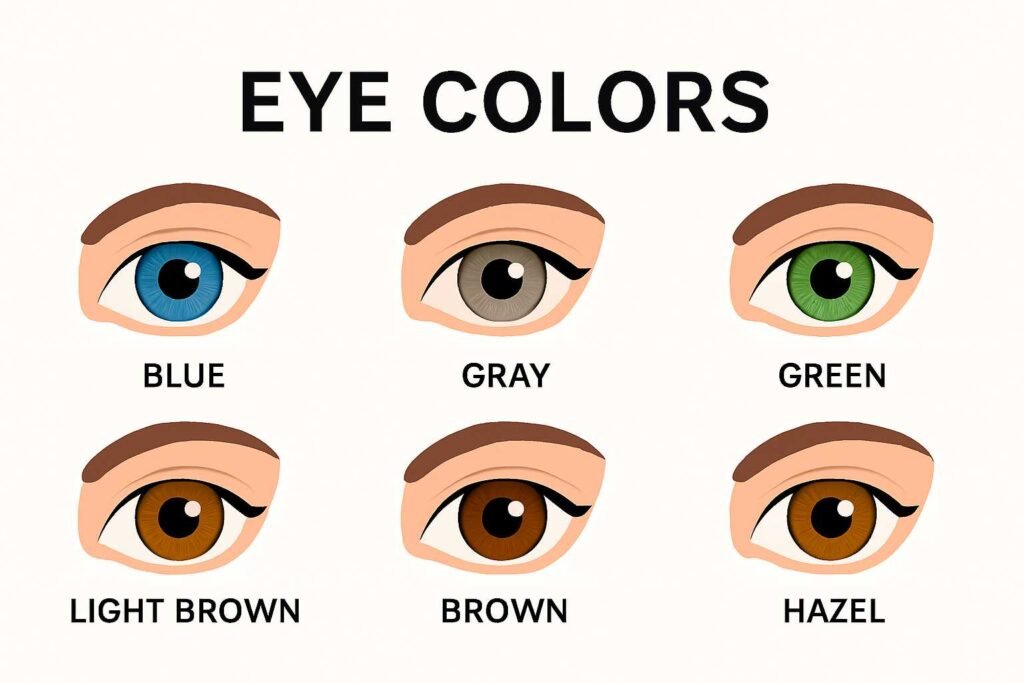

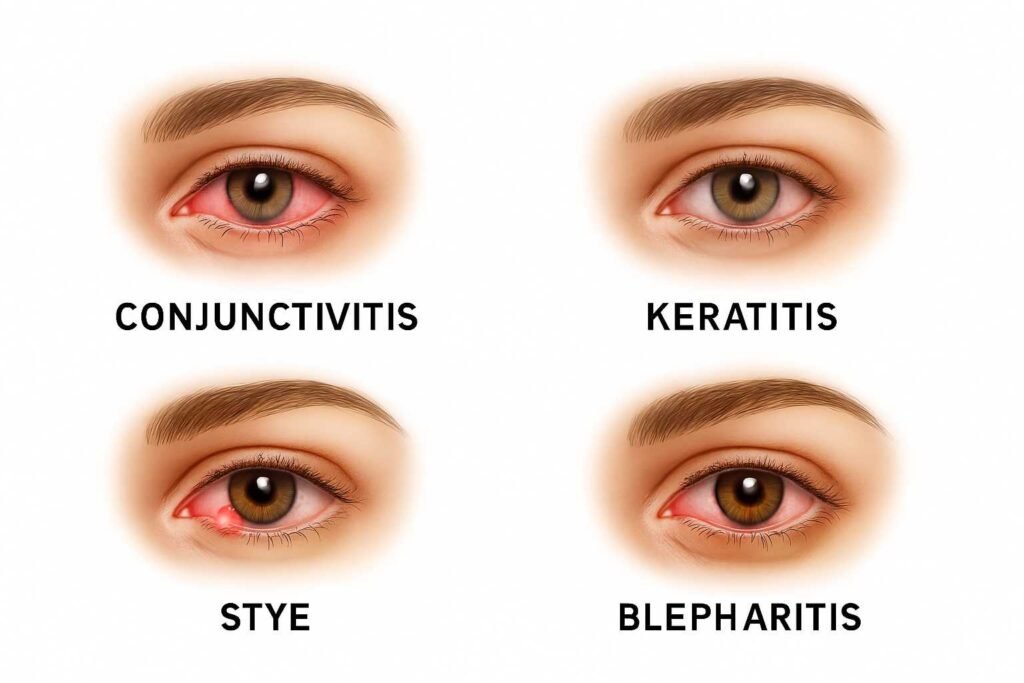




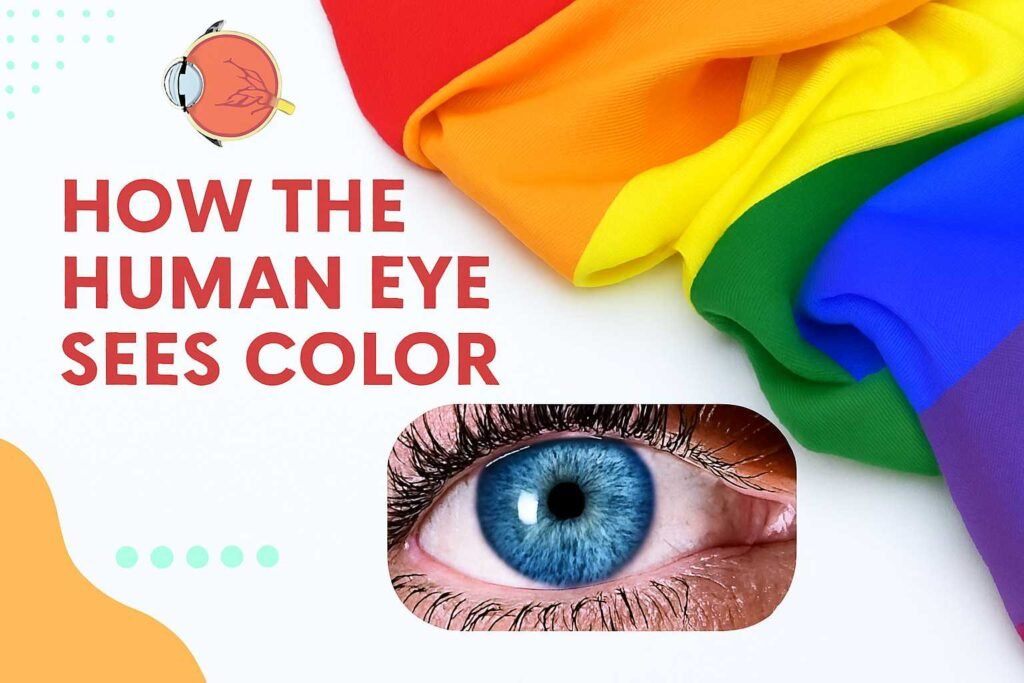




2 thoughts on “How the Human Eye Sees Color”
Some truly interesting details you have written.Aided me a lot, just what I was looking for : D.
Good web site! I truly love how it is easy on my eyes and the data are well written. I’m wondering how I might be notified when a new post has been made. I have subscribed to your feed which must do the trick! Have a nice day!